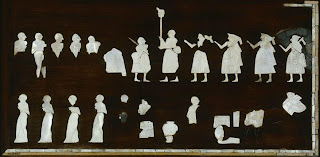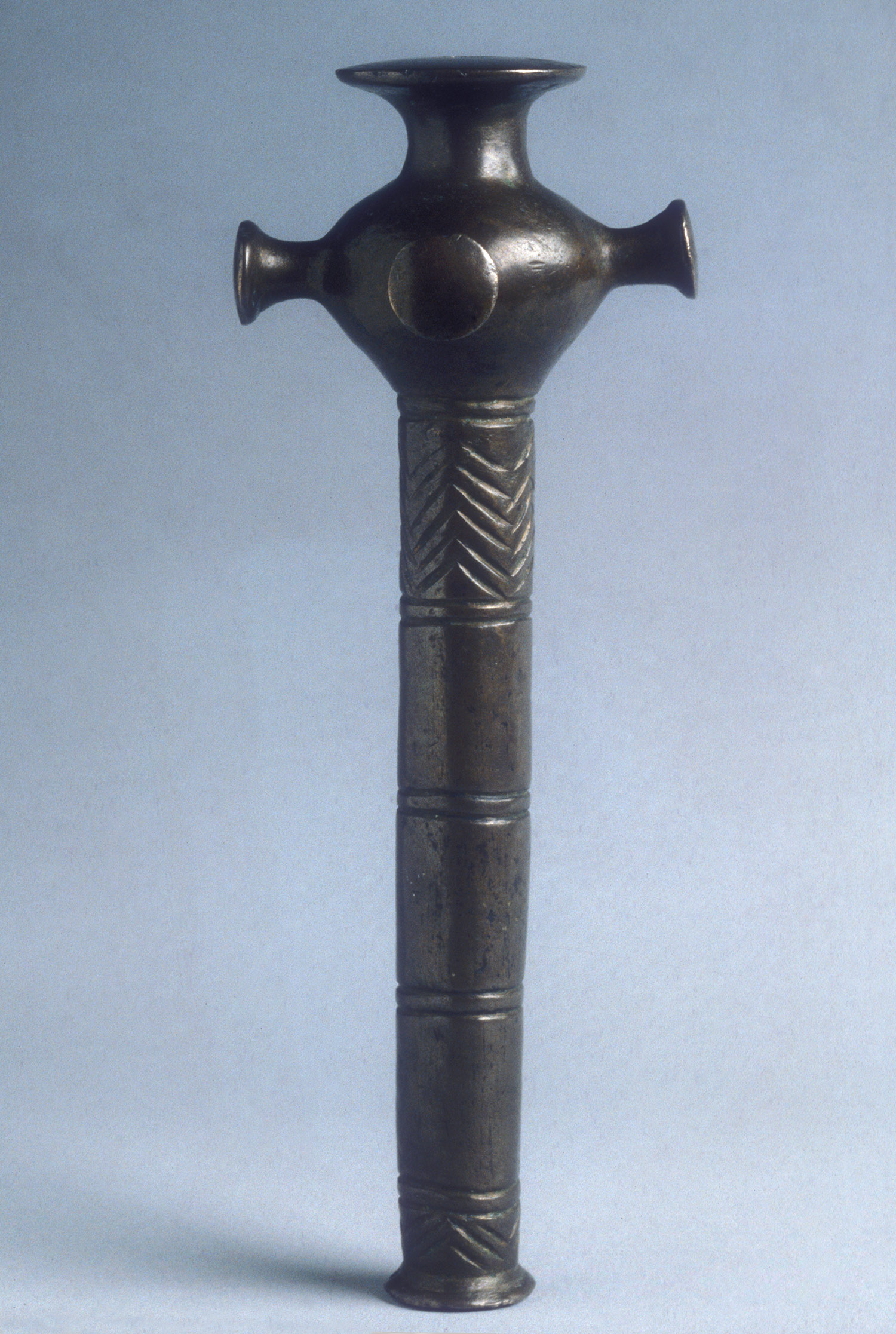Mirror: http://tinyurl.com/q45ez77
An overview of Indus Script and the purpose served by the writing system is presented in this note.
Indus Script is a display and messaging system for speech (parole) -- distinguished from langue (literary form, language).
Indus Script Corpora is seen and read from over 7000 inscriptions of Indus Script Corpora.
The purpose Indus Script serves is to message technical specifications of metalcastings and metalwork for trade transactions in an extensive contact area which stretched along the Maritime Tin Route from Hanoi, Vietnam to Haifa, Israel from ca. 4th millennium BCE -- which constituted a transition from copper-lithic phase to tin-bronze, alloys & iron phase of material advance of civilizations. The messages of Indus Script Corpora are, thus, catalogous catalogorum of metalwork.
Indus Script is composed of hieroglyph-multiplexes (hypertexts).
Indus Script is a versatile messaging system of hypertexts, by orthographically creating hieroglyph-multiplexes composed of hieroglyph-components.
The cipher of the writing system was called by Vatsyayana as mlecchita vikalpa (Meluhha cipher). The cipher is derived from homonym (similar-sounding word) sets of Meluhha or Proto-Prakritam lexis (1) signifying the hieroglyph components in writing and (2) rebus-metonymy layer signifying metalwork.
The underlying language is the speech (sprach)-form which constitute a lexis (vocabulary set) of metalwork in Meluhha (Mleccha) speech which is recognized as Proto-Prakritam, with many dēśī देशी (lingua franca or parole) words, phrases or expressions. These words, phrases or expressions are retained as tatsama, tadbhava and recorded in the lexicons of proto-versions of ancient languages of Indian sprachbund (speech union or linguistic area).
The artisans, lapidaries/metalworkers in particular, who created and used the writing system were Bhāratam Janam attested in Rigveda (RV 3.53.12).
Since Indus Script is a display system for speech, displays could be
(1) carried on flag-posts in processions, (Figs. 1 to3)
(2) shown and broadcast on a monolithic announcement board or hoarding as on a Dholavira Signboard on the Northern Gateway, (Figs. 4,5)
(3) written down in free-hand on a gold pendant, (Fig.6)
(4) written down on a pectoral, (Fig.7)
(5) displayed on gold fillet (Fig.8), metal implements (Figs.9,10), (tin) ingots (Fig. 11,12), cast copper tablet (Fig. 13), copper plates (Fig.14), faience or steatite tablets or seals (Fig.15) and
(6) signified as cire perdue (lost-wax) metalcasting artifacts (Fig.16).
![]()
![Image result for meluhha procession]() m0490, m0491 (Fig.1)
m0490, m0491 (Fig.1)
![]() Frieze of a mosaic panel Circa 2500-2400 BCE Temple of Ishtar, Mari (Tell Hariri), Syria Shell and shale André Parrot excavations, 1934-36 AO 19820 (Fig.2)
Frieze of a mosaic panel Circa 2500-2400 BCE Temple of Ishtar, Mari (Tell Hariri), Syria Shell and shale André Parrot excavations, 1934-36 AO 19820 (Fig.2)![]() Akkadian cylinder seal, showing kneeling heroes. Around 2200 BCE.Cylinder seal with kneeling nude heroes, ca. 2220–2159 b.c.; Akkadian Mesopotamia Red jasper H. 1 1/8 in. (2.8 cm), Diam. 5/8 in. (1.6 cm) Metropolitan Museum of Art - USA (Fig.3)
Akkadian cylinder seal, showing kneeling heroes. Around 2200 BCE.Cylinder seal with kneeling nude heroes, ca. 2220–2159 b.c.; Akkadian Mesopotamia Red jasper H. 1 1/8 in. (2.8 cm), Diam. 5/8 in. (1.6 cm) Metropolitan Museum of Art - USA (Fig.3)
![Image result for dholavira gateway signboard]() Reconstruction. Dholavira Gateway with Signboard. (Fig.4)
Reconstruction. Dholavira Gateway with Signboard. (Fig.4)![Image result for dholavira gateway signboard]() Signboard. Dholavira (Fig.5)
Signboard. Dholavira (Fig.5)
![]()
![]() Mohenjo-daro. Gold pendant with painted inscription.(Fig.6)
Mohenjo-daro. Gold pendant with painted inscription.(Fig.6)
![]() Mohenjo-daro pectoral (Fig.7)
Mohenjo-daro pectoral (Fig.7)
![Image result for mohenjo-daro inscribed dagger]() Inscribed metal implements (Fig.9)
Inscribed metal implements (Fig.9)![]() Chanhu-daro, Pl. LXXIV & Mohenjo-daro: copper and bronze tools and utensils (Fig.10)
Chanhu-daro, Pl. LXXIV & Mohenjo-daro: copper and bronze tools and utensils (Fig.10)![tiningotegypt_small.jpg (15880 bytes)]()
![]()
![Image result for indus script inscribed dagger]() Cast copper tablet. Harappa (Fig.13)
Cast copper tablet. Harappa (Fig.13)![Image result for indus script copper plates]() Copper plates inscribed (Fig. 14)
Copper plates inscribed (Fig. 14)![]() 22 tablets displayed together with a unicorn intaglio seal from the Period 3B street inside the perimeter wall, Harappa (Source: HARP)(Fig.15)
22 tablets displayed together with a unicorn intaglio seal from the Period 3B street inside the perimeter wall, Harappa (Source: HARP)(Fig.15)![Image result for dancing girl potsherd]()
![Image result for mohenjo-daro inscribed dagger]() Bronze castings: dancing girl, anklet on foot, bull. Dancing girl on potsherd in same orthographic style as dancing girl on bronze statuette (Fig.16)
Bronze castings: dancing girl, anklet on foot, bull. Dancing girl on potsherd in same orthographic style as dancing girl on bronze statuette (Fig.16)
![]() Dong Son Bronze drum Top surface with hieroglyphs
Dong Son Bronze drum Top surface with hieroglyphs![]() Leopard bronze weight of Shahi-Tump (Baluchistan)
Leopard bronze weight of Shahi-Tump (Baluchistan)
![]()
![]()
![]() Nahal Mishmar arsenical-copper artifacts (with hieroglyphs), 4th millennium BCE.
Nahal Mishmar arsenical-copper artifacts (with hieroglyphs), 4th millennium BCE.
An overview of Indus Script and the purpose served by the writing system is presented in this note.
Indus Script is a display and messaging system for speech (parole) -- distinguished from langue (literary form, language).
Indus Script Corpora is seen and read from over 7000 inscriptions of Indus Script Corpora.
The purpose Indus Script serves is to message technical specifications of metalcastings and metalwork for trade transactions in an extensive contact area which stretched along the Maritime Tin Route from Hanoi, Vietnam to Haifa, Israel from ca. 4th millennium BCE -- which constituted a transition from copper-lithic phase to tin-bronze, alloys & iron phase of material advance of civilizations. The messages of Indus Script Corpora are, thus, catalogous catalogorum of metalwork.
Indus Script is composed of hieroglyph-multiplexes (hypertexts).
Indus Script is a versatile messaging system of hypertexts, by orthographically creating hieroglyph-multiplexes composed of hieroglyph-components.
The cipher of the writing system was called by Vatsyayana as mlecchita vikalpa (Meluhha cipher). The cipher is derived from homonym (similar-sounding word) sets of Meluhha or Proto-Prakritam lexis (1) signifying the hieroglyph components in writing and (2) rebus-metonymy layer signifying metalwork.
The underlying language is the speech (sprach)-form which constitute a lexis (vocabulary set) of metalwork in Meluhha (Mleccha) speech which is recognized as Proto-Prakritam, with many dēśī देशी (lingua franca or parole) words, phrases or expressions. These words, phrases or expressions are retained as tatsama, tadbhava and recorded in the lexicons of proto-versions of ancient languages of Indian sprachbund (speech union or linguistic area).
The artisans, lapidaries/metalworkers in particular, who created and used the writing system were Bhāratam Janam attested in Rigveda (RV 3.53.12).
Since Indus Script is a display system for speech, displays could be
(1) carried on flag-posts in processions, (Figs. 1 to3)
(2) shown and broadcast on a monolithic announcement board or hoarding as on a Dholavira Signboard on the Northern Gateway, (Figs. 4,5)
(3) written down in free-hand on a gold pendant, (Fig.6)
(4) written down on a pectoral, (Fig.7)
(5) displayed on gold fillet (Fig.8), metal implements (Figs.9,10), (tin) ingots (Fig. 11,12), cast copper tablet (Fig. 13), copper plates (Fig.14), faience or steatite tablets or seals (Fig.15) and
(6) signified as cire perdue (lost-wax) metalcasting artifacts (Fig.16).

 Frieze of a mosaic panel Circa 2500-2400 BCE Temple of Ishtar, Mari (Tell Hariri), Syria Shell and shale André Parrot excavations, 1934-36 AO 19820 (Fig.2)
Frieze of a mosaic panel Circa 2500-2400 BCE Temple of Ishtar, Mari (Tell Hariri), Syria Shell and shale André Parrot excavations, 1934-36 AO 19820 (Fig.2) Akkadian cylinder seal, showing kneeling heroes. Around 2200 BCE.Cylinder seal with kneeling nude heroes, ca. 2220–2159 b.c.; Akkadian Mesopotamia Red jasper H. 1 1/8 in. (2.8 cm), Diam. 5/8 in. (1.6 cm) Metropolitan Museum of Art - USA (Fig.3)
Akkadian cylinder seal, showing kneeling heroes. Around 2200 BCE.Cylinder seal with kneeling nude heroes, ca. 2220–2159 b.c.; Akkadian Mesopotamia Red jasper H. 1 1/8 in. (2.8 cm), Diam. 5/8 in. (1.6 cm) Metropolitan Museum of Art - USA (Fig.3) Mohenjo-daro pectoral (Fig.7)
Mohenjo-daro pectoral (Fig.7) Chanhu-daro, Pl. LXXIV & Mohenjo-daro: copper and bronze tools and utensils (Fig.10)
Chanhu-daro, Pl. LXXIV & Mohenjo-daro: copper and bronze tools and utensils (Fig.10)
Two Tin ingots with 2 hieroglyphs in the Museum of Ancient Art of the Municipality of Haifa, Israel (left #8251, right #8252). (Fig.11) One tin ingot with 3 hieroglyphs: Michal Artzy, 1983, Arethusa of the Tin Ingot, Bulletin of the American Schools of Oriental Research, BASOR 250, pp. 51-55 (Fig.12)
 22 tablets displayed together with a unicorn intaglio seal from the Period 3B street inside the perimeter wall, Harappa (Source: HARP)(Fig.15)
22 tablets displayed together with a unicorn intaglio seal from the Period 3B street inside the perimeter wall, Harappa (Source: HARP)(Fig.15)Examples of hieroglyphs on artifacts
 Dong Son Bronze drum Top surface with hieroglyphs
Dong Son Bronze drum Top surface with hieroglyphs Leopard bronze weight of Shahi-Tump (Baluchistan)
Leopard bronze weight of Shahi-Tump (Baluchistan)
Four flag-posts(reeds) with rings on top held by the kneeling persons define the four components of the iron smithy/forge. This is an announcement of four shops, पेढी (Gujarati. Marathi). पेंढें 'rings' Rebus: पेढी 'shop'.āra 'serpent' Rebus; āra 'brass'. karaḍa 'double-drum' Rebus: karaḍa 'hard alloy'.

 Nahal Mishmar arsenical-copper artifacts (with hieroglyphs), 4th millennium BCE.
Nahal Mishmar arsenical-copper artifacts (with hieroglyphs), 4th millennium BCE.Sources: Indus Script Quartet, publications: Author: S. Kalyanaraman
1. Indus Script Cipher -- Hieroglyhphs of Indian Linguistic Area (2010)
2. Indus Script: Meluhha metalwork hieroglyphs (2014)
3. Philosophy of Symbolic forms in Meluhha cipher (2014)
4. Indus Script deciphered-- Rosetta stones, mlecchita vikalpa, meluhha cipher (2015)
S. Kalyanaraman
Sarasvati Research Center
September 10, 2015
